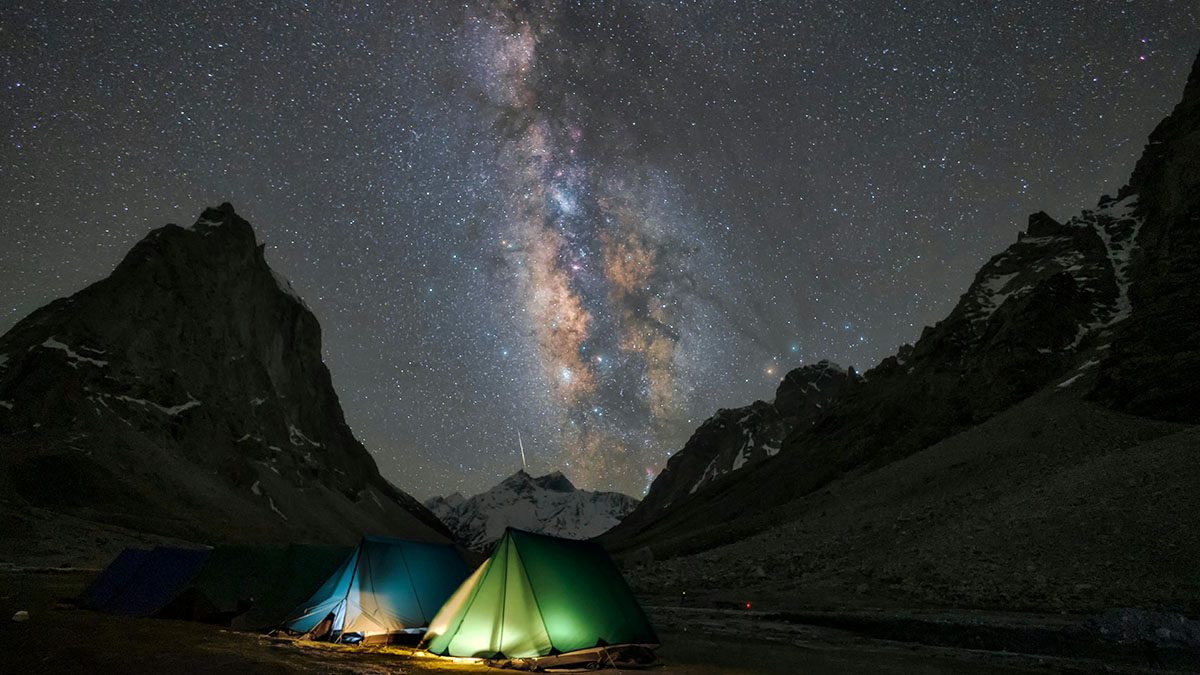Table of Contents
Mount Kilimanjaro Night Temperature: What to Expect During Your Trek and Summit Day | Kili Quests
Climbing Mount Kilimanjaro is a thrilling challenge — but many trekkers underestimate the nighttime cold at high altitudes. While days can be sunny and warm, nights on the mountain bring drastically lower temperatures, especially near the summit.
In this guide, Kili Quests explains what night temperatures to expect at each stage of your trek and how to stay warm, safe, and prepared from base camp to summit.
Understand how temperature changes across Kilimanjaro’s five climate zones.
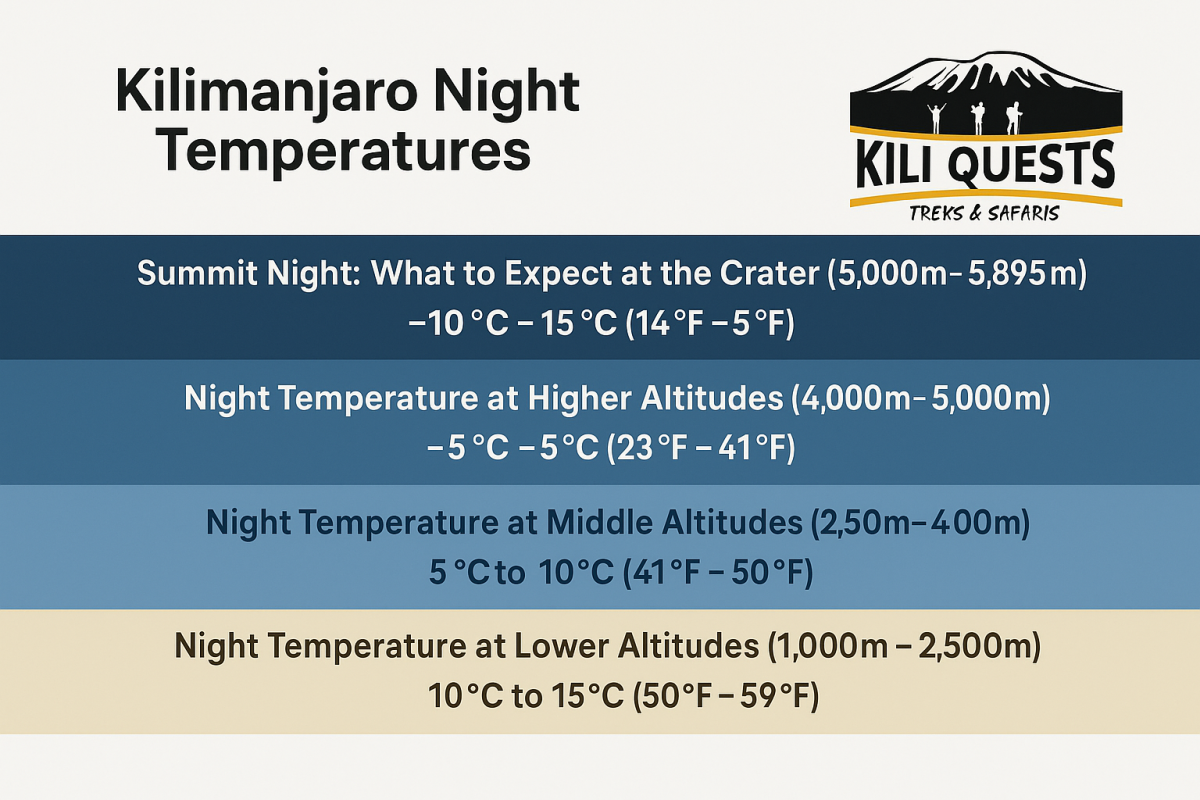
Night Temperatures by Altitude on Kilimanjaro
1. Lower Altitudes (1,000m – 2,500m)
- Temperature Range: 10°C to 15°C (50°F to 59°F)
- Example Camps: Machame Gate, Rongai Start Point
What to Expect
These zones are relatively warm. Nights are cool but manageable.
What to Wear:
- Lightweight fleece or jacket
- Long-sleeved base layer
- Warm socks and light gloves if needed
2. Middle Altitudes (2,500m – 4,000m)
- Temperature Range: 5°C to 10°C (41°F to 50°F)
- Example Camps: Shira Camp, Barranco Camp, Karanga Camp
What to Expect
Temperatures drop significantly after sunset. You’ll feel the chill.
What to Wear:
- Insulating fleece or down jacket
- Thermal sleeping pants
- Beanie and gloves for warmth
Ecological Zones of Kilimanjaro: A Climber’s Guide – Learn how each zone affects your comfort and gear.
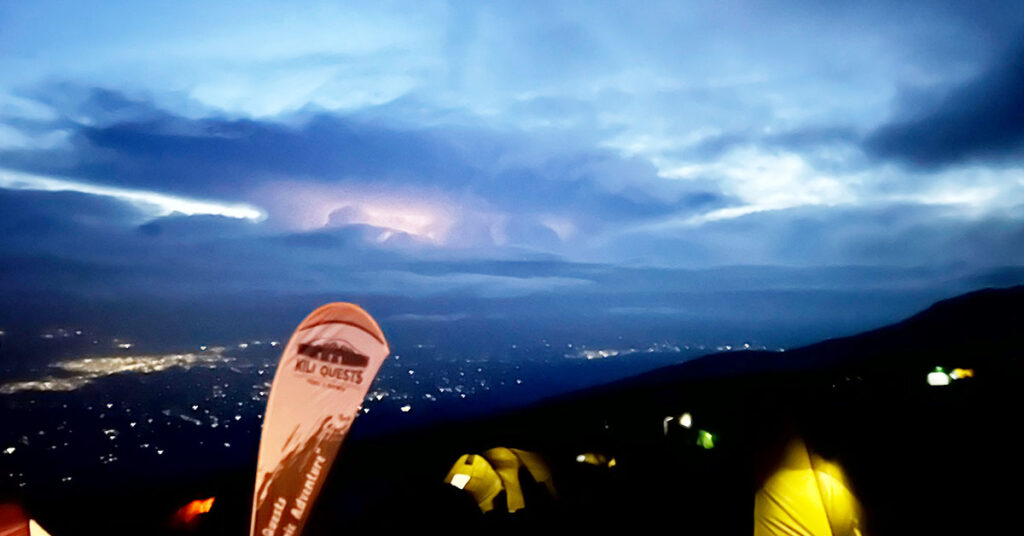
3. High Altitudes (4,000m – 5,000m)
- Temperature Range: -5°C to 5°C (23°F to 41°F)
- Example Camps: Barafu Camp, Kibo Hut
What to Expect
Cold nights become extreme at this level. Warmth becomes essential for sleep and safety.
What to Wear:
- Down or insulated jacket
- Thermal underwear
- Wool socks and hat
- Cold-rated sleeping bag (-10°C or below)
4. Summit Night (5,000m – 5,895m)
- Temperature Range: -10°C to -15°C (14°F to 5°F)
- Trek Timing: Midnight start from Barafu to Uhuru Peak
What to Expect
This is the coldest part of the entire climb. Windchill makes it feel even colder. You’ll climb in total darkness for 6–8 hours before sunrise.
What to Wear on Summit Night:
- Heavy-duty down jacket
- Thermal gloves, balaclava, and face covering
- Base layer + fleece + insulated outer layer
- Waterproof boots + thick socks
- Hand warmers or toe warmers (optional but helpful)
Kilimanjaro Summit Day Gear Checklist – Don’t underestimate what you need for summit night.
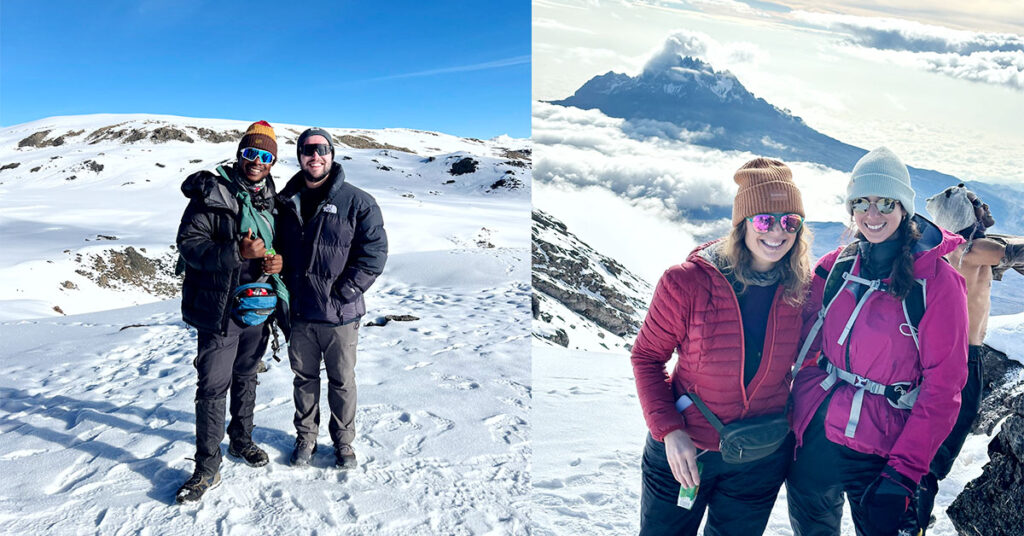
Tips to Stay Warm on Kilimanjaro
Dress in Layers
Layering helps regulate body temperature as you move through different zones:
- Base layer (moisture-wicking)
- Insulating mid-layer (fleece or down)
- Outer layer (windproof and waterproof)
Use our updated checklist to pack the right layers for chilly nights.
Stay Hydrated & Eat Well
- Drink 3–4 liters daily to improve circulation and prevent cold stress
- Eat high-energy meals before bed for warmth
- Avoid caffeine and alcohol, which can interfere with sleep and body heat
Use the Right Sleeping Gear
- Bring a sleeping bag rated for -10°C to -15°C or colder
- Add a sleeping bag liner for extra insulation
- Sleep in clean, dry thermals to avoid heat loss
Move When Cold
If you wake up freezing or can’t sleep:
- Do light stretches inside your tent
- Walk gently around camp
- Sip warm water or tea
Essential Medication & Health Tips – Learn how cold impacts your altitude adaptation and energy levels.
Final Packing Advice for Cold Nights
Before your trek, use this checklist for nighttime warmth:
- Thermal base layers (top and bottom)
- Insulated down jacket
- Warm hat, gloves, and neck covering
- High-quality sleeping bag (-10°C or lower)
- Hand and foot warmers
- Dry socks and spare thermals
Kilimanjaro Packing List – Use our updated list to make sure you’re fully ready.
Prepare for Kilimanjaro’s Night Temperatures with Confidence
Kilimanjaro’s beauty comes with extremes — especially at night. But with the right preparation, you’ll stay warm, sleep well, and climb strong.
At Kili Quests, we guide you through every detail, from recommended gear to how to dress for summit night. You can rent high-quality gear locally if you need extra layers.
Ready to conquer Kilimanjaro? Contact us today to plan your trek and stay safe from base to summit.
Related Articles
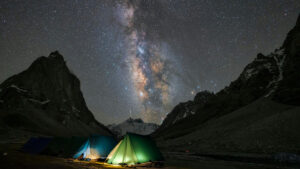
Guide to Cold Nights on Mount Kilimanjaro
April 13, 2025
No Comments
Table of Contents Mount Kilimanjaro Night Temperature: What to Expect During Your Trek and Summit Day | Kili Quests Climbing Mount Kilimanjaro is a

Stay Clean on Kilimanjaro: Showers, Wipes & Hygiene
April 15, 2025
No Comments
Table of Contents Hygiene on Mount Kilimanjaro: Showers, Water, and Staying Fresh While Trekking Maintaining good hygiene during your Mount Kilimanjaro trek is essential for
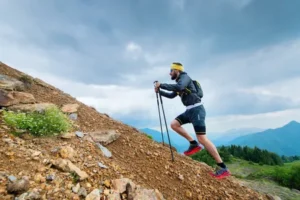
Climb Kilimanjaro: 6-Week Fitness & Training Guide
April 15, 2025
No Comments
Table of Contents How to Train for Kilimanjaro: Your 6-Week Fitness Plan Climbing Mount Kilimanjaro is not just a trek — it’s a personal


